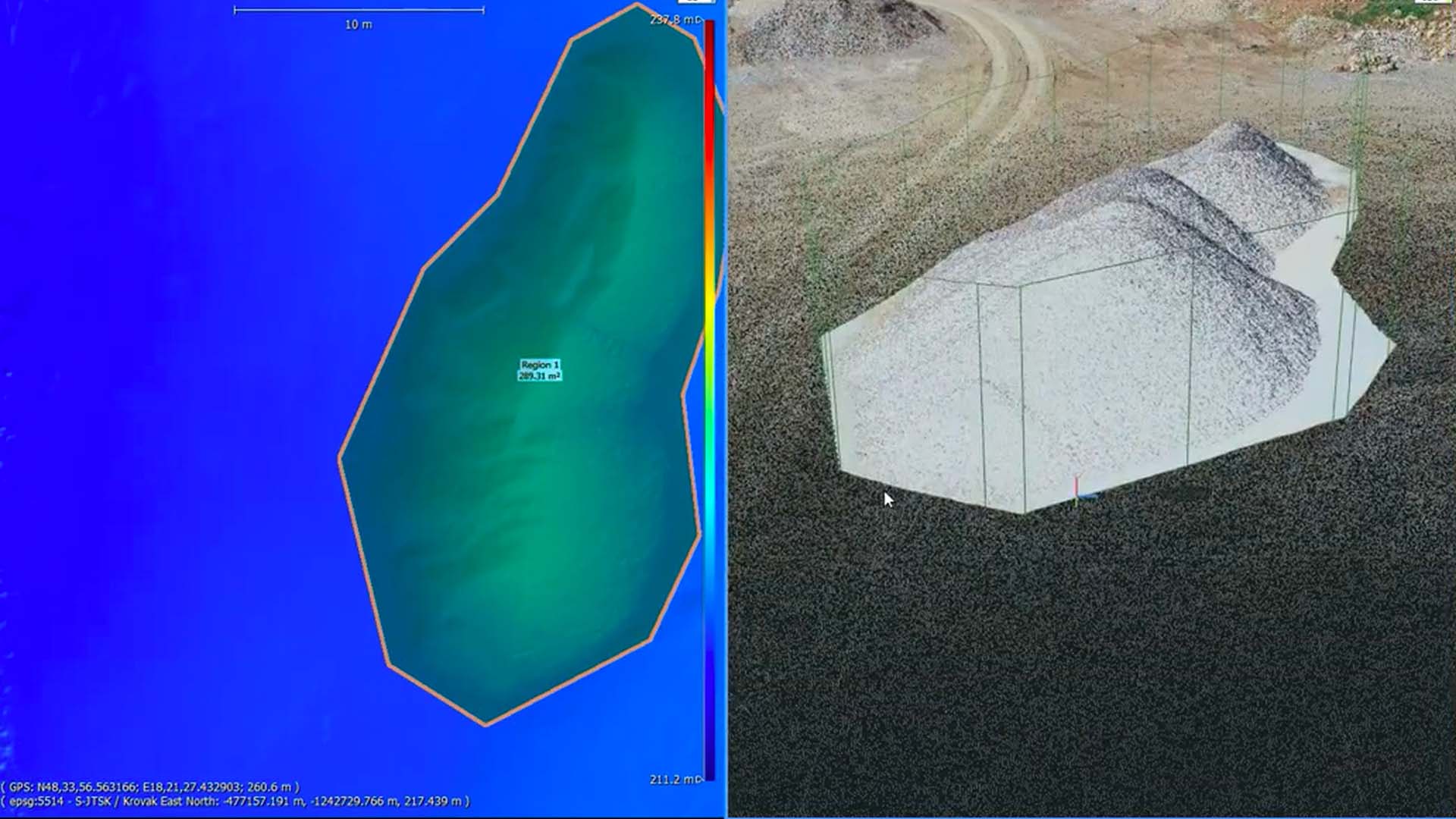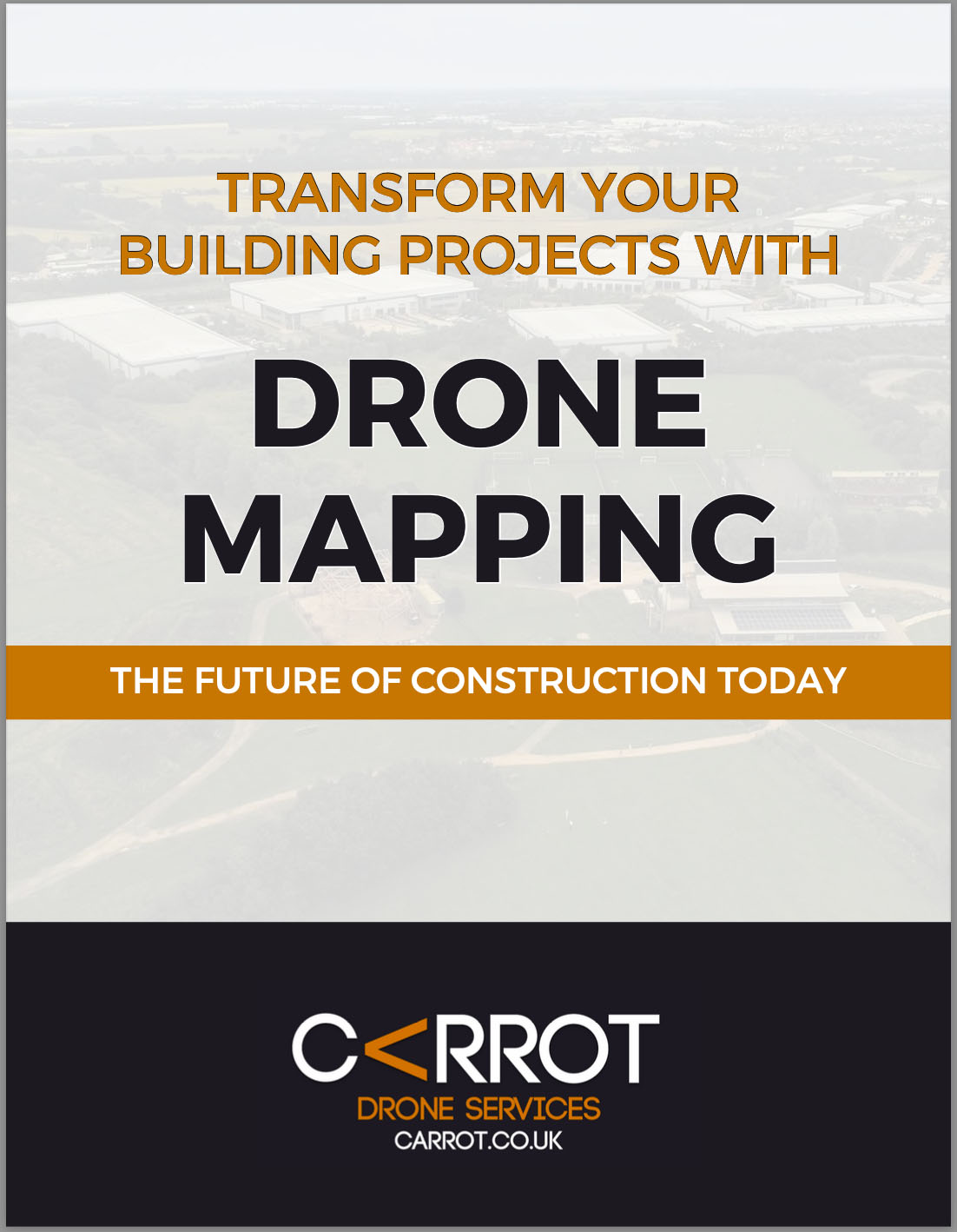Read Time 5 mins
14/07/2023

Introduction
In the world of construction, mining and agriculture, ensuring accurate stockpile measurements has been a long-standing challenge. Traditional methods like manual surveys or stationary laser scanners have been in use for years, but they often fall short in terms of accuracy, efficiency and safety.
The inaccurate measurements stemming from these methods can lead to significant errors, misestimating costs and resources and even creating potential hazards for personnel involved. This is where drone mapping steps in as a groundbreaking solution.
Drone mapping - a technologically advanced method that leverages unmanned aerial vehicles (UAVs) - is swiftly changing the landscape of stockpile measurement. Providing more precise, faster and safer measurements, drone mapping presents a new era of streamlined operations for various industries.
At the helm of this innovative practice, you will find us - Carrot Drone Services. We are a leading provider of drone mapping services, committed to delivering high-quality and reliable solutions to businesses worldwide. This article will delve deeper into how our process works, the benefits it brings and why it is the future of stockpile measurement. Let's get started on this journey to reimagine how stockpile measurements can be efficiently and accurately managed.
Understanding Drone Mapping
Drone mapping, also known as aerial surveying or photogrammetry, is a method that uses unmanned aerial vehicles (UAVs) - in simpler terms, drones - to capture high-resolution aerial photographs and data of a specific area. This technique offers a bird's eye view, facilitating comprehensive and accurate mapping of any given space, especially for complex structures such as stockpiles.
But how exactly does drone mapping work? The process is surprisingly straightforward:
-
The Equipment: The primary tool in drone mapping is, of course, the drone. These aren't your average hobby drones - we use commercial-grade UAVs equipped with advanced cameras and sensors, including GPS and gyroscopic stabilisers. This technology allows the drone to maintain steady flight patterns and capture detailed, high-resolution images from various angles.
-
Flight Planning: Before the drone ever leaves the ground, a detailed flight plan is mapped out. Using sophisticated software, we program a specific route for the drone to follow, based on the GPS coordinates of the area to be mapped. This plan ensures the drone captures every inch of your stockpile.
-
Data Capture: The real action begins when the drone takes off. As it follows the predetermined flight path, the onboard camera captures hundreds or even thousands of overlapping images. The GPS and sensors record critical data during the flight, such as altitude, orientation and position, to ensure each photo can be accurately located in the map.
-
Landing and Data Extraction: Once the flight is complete, the drone lands and the captured images and data are ready for processing.
This process enables us to gather extensive, accurate and high-quality data about your stockpile, ready to be transformed into actionable insights. The next steps involve turning this wealth of data into a detailed map - but that's a topic for the next section!
The Process of Drone Mapping for Stockpile Measurements
With drone mapping, the measurement of stockpiles becomes a precise and streamlined process. Here's a step-by-step breakdown of how we at Carrot Drone Services carry out drone mapping for accurate stockpile measurements:
Step 1: Pre-flight Planning and Setup
The process begins with careful planning. Our team first determines the flight path based on the area that needs to be mapped. Using advanced software, we program the drone with the precise GPS coordinates of the flight path, ensuring complete and comprehensive coverage of your stockpile area.
Step 2: Autonomous Flight and Data Capture
Once the flight plan is set, it's time for takeoff. The drone autonomously follows the pre-determined flight path, maintaining a specific altitude to ensure uniform image quality. As it navigates the flight path, the drone's onboard high-resolution camera captures hundreds of overlapping images, while the advanced sensors collect vital data about the stockpile's size, shape and location.
Step 3: Data Processing
After the drone lands, the real magic begins. The data captured by the drone isn't very useful in its raw form. That's why we employ sophisticated photogrammetry software to process this information. This software stitches the overlapping images together and uses the sensor data to build an accurate, detailed 3D model of your stockpile.
Step 4: Analysis and Reporting
But we don't stop at just creating a 3D model. Our team then dives into the model to analyze the data, using the insights to calculate the volume, mass and other critical parameters of the stockpile. Finally, we compile all this information into an easy-to-understand report, which we present to you, providing you with precise measurements and valuable insights about your stockpile.
So there you have it – a comprehensive, step-by-step overview of how drone mapping is used to obtain accurate stockpile measurements. It's a mix of cutting-edge technology, skilled handling and careful analysis – and it's revolutionising the way businesses measure and manage their stockpiles.
Benefits of Using Drone Mapping for Stockpile Measurement
Drone mapping provides a plethora of advantages over traditional measurement methods. From improving accuracy to enhancing safety and saving time and resources, drone mapping is a game-changer for stockpile measurement. Let's delve into these benefits:
Improved Accuracy
One of the main advantages of drone mapping is its superior accuracy. While traditional methods often lead to inaccuracies due to human error or limitations in the tools used, drone mapping eliminates these issues. By capturing hundreds of high-resolution images and using advanced software to process them, drone mapping can provide measurement accuracies up to 98% - a significant improvement over conventional techniques.
Enhanced Safety
Stockpile measurement often involves personnel climbing on potentially unstable surfaces, presenting a significant safety risk. With drone mapping, these risks are eliminated. The drone can easily fly over and around the stockpile, capturing all necessary data from a safe distance. This means no more climbing and significantly reduced risk of workplace accidents.
Time and Resource Efficiency
Traditional stockpile measurement can be time-consuming, often requiring days or even weeks to complete. Drone mapping, on the other hand, is much more efficient. A drone can cover a large area in a fraction of the time it would take a human surveyor. This speed allows for more frequent measurements, ensuring you always have up-to-date information about your stockpiles. Moreover, with faster data collection and analysis, decision-making processes are sped up, saving your business valuable time and resources.
Case Study
Let's look at a real-life example of how drone mapping has revolutionised stockpile measurement. A construction company dealing with large volumes of various materials faced challenges in keeping track of their stockpiles. Traditional measurement methods were time-consuming and resulted in significant discrepancies.
After engaging Carrot Drone Services, they saw immediate benefits. Our drone mapping technology enabled the company to measure their stockpiles with an extrememley high level of accuracy, drastically reducing their margin of error. The company was also able to make timely decisions based on these accurate measurements, increasing efficiency and productivity.
In conclusion, drone mapping for stockpile measurement not only saves time and ensures safety, but it also provides the level of accuracy needed for optimal operational efficiency. And at Carrot Drone Services, we're dedicated to harnessing this technology to help businesses reap these benefits.
Conclusion
In an age where technology continues to evolve rapidly, businesses must seize opportunities to innovate, streamline their operations and enhance their decision-making processes. One such opportunity is drone mapping for stockpile measurements – a revolutionary technique that brings unparalleled accuracy, improved safety and immense time and resource efficiencies.
By utilising state-of-the-art drones, advanced software and comprehensive data analysis, drone mapping turns the arduous task of stockpile measurement into a streamlined and precise process. This shift in approach results in more accurate data, better safety practices, faster decision-making and ultimately, more effective management of resources.
At Carrot Drone Services, we are committed to helping businesses harness the power of drone mapping technology. Our team of experts is ready to guide you through the process and tailor our services to your specific needs. Whether you're looking to improve accuracy, safety or efficiency, drone mapping is the solution that will revolutionise your approach to stockpile measurements.
Ready to take the next step towards innovation? We invite you to reach out to Carrot Drone Services for more information or to schedule a drone mapping session. Join us in driving the future of stockpile measurements, where precision, safety and efficiency are at the forefront.
